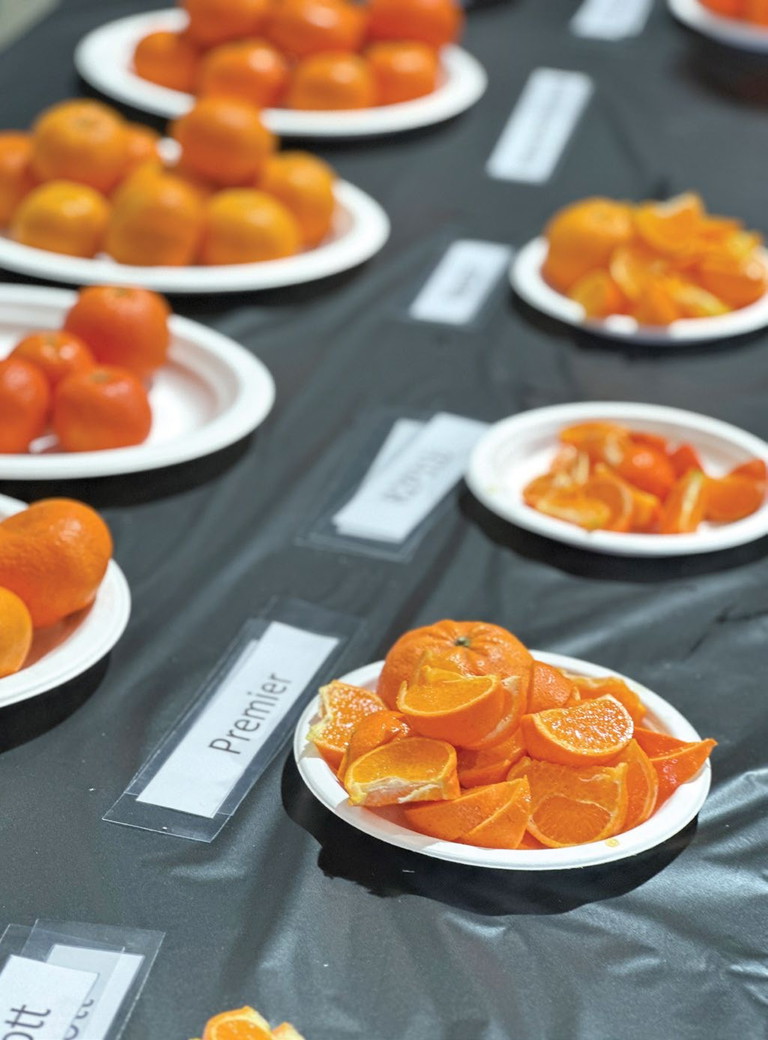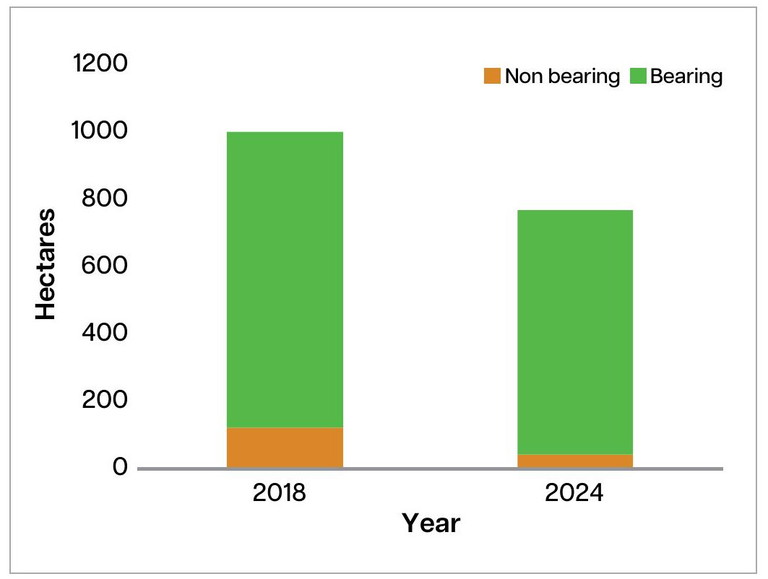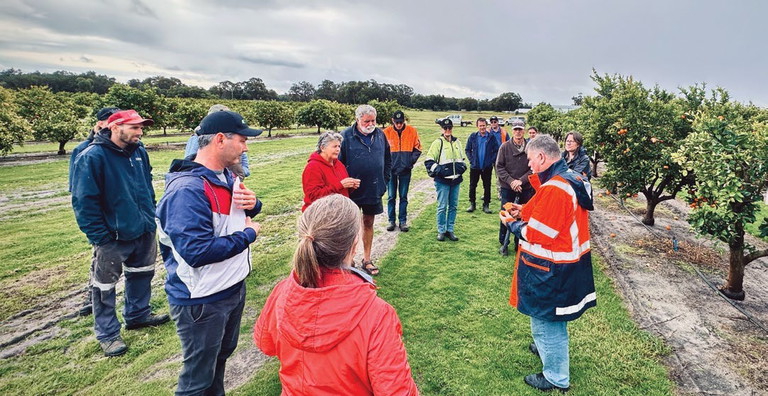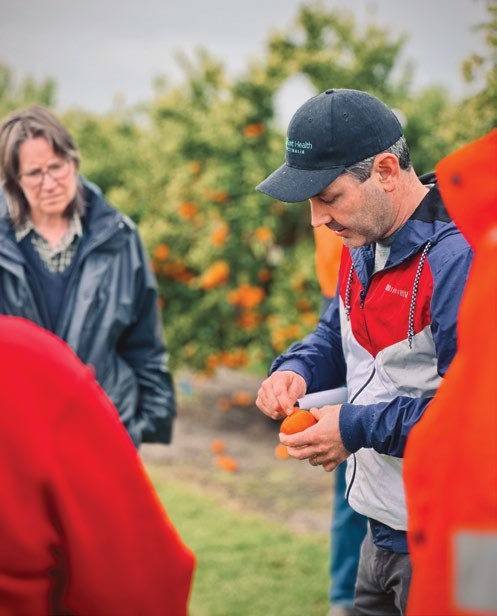WA CITRUS new varieties

Fruit was available for tasting from the evaluation trials.
MATCHING MARKET DEMAND
WA growers assess the next generation of citrus
We had a great turnout at the variety days in August, held in West Gingin and Harvey. Guided by Kevin Lacey, from the WA Department of Primary Industries and Regional Development, we had two presentations, followed by tasting of new varieties and a field walk.
Words Dave Monks, Research Horticulturist, DPI NSW; Kevin Lacey, Senior Technical Officer, DPIRD; and, Bronwyn Walsh, Industry Development Manager, WA Citrus
BRONWYN Walsh, industry development manager from WA Citrus, set the scene for the day, covering key components that growers consider when choosing a new variety. Front of mind is consumer demand. Our customers ultimately have the purchasing power to influence what is grown via buyers. From market research, we know consumers like citrus fruit, it is in the top three fruits purchased in Australia. Popular characteristics for consumers include ‘easy peel’, ‘the right balance of brix to acid’, ‘seedless’ and ‘locally produced’.
From the grower’s perspective, a variety should not only meet consumer demand, but also deliver a good return based on its supply window, current and future availability, and its ability to be managed cost-effectively.
Delving into the data available to growers: the national citrus tree census provides an annual report to Australian growers on the area of trees planted. In WA, close to 750 hectares of citrus were in the ground in 2024 (see Figure 1).

FIGURE 1. The area of production in WA in 2018 and 2024
Source: Citrus Australia Tree census project
Since 2018, the proportion of non-bearing trees has decreased from 12% to 2%, as trees matured into full production and fewer new trees were planted. While the overall area of production for each category has declined since 2018, there has been an increase in seedless varieties such as Valencias, lemons and late mandarins, and a reduction in seeded Valencias, Late Lane navels and seeded mandarins.


Looking at new varieties in the field at West Gingin trial site.
Kevin evaluates the varieties at two trial sites in WA — West Gingin and Harvey. This allows for performance assessment in local soils and investigation of maturing windows.
Perfect for consumers, WA orchards offer fruit from every category, including navels, Valencias, mandarins, limes and grapefruit.
In addition, the 2025 crop forecast and market throughput for WA fruit shows that despite the reduction in planted area, production has increased by over 5,000 tonnes from WA orchards. This will help meet consumer demand for locally produced fruit. The presence of interstate fruit in the WA market during our season suggests there is scope to displace this with locally grown fruit — if we can match what is being ‘imported’.
Are there new varieties with better characteristics or supply windows that can bring a better price or displace interstate fruit?
Dave Monks, from the New South Wales Department of Primary Industries and Regional Development, presented the latest results from evaluations of new varieties in Dareton, NSW and WA. This work builds on over two decades of assessments as new varieties are developed.
The evaluation results presented covered mandarins, navels and Valencia categories. The varieties include both private and public releases, originating from Florida, South Africa, Korea, Australia and Spain.
Fruit is assessed on size, rind features, seed count and brix/acid ratios. Yield, potential management issues and susceptibility are also noted. Assessments are conducted over two to five years to eliminate variations due to age and seasonal conditions. Some varieties have excellent taste profiles but do not meet other ideal characteristics for current markets — such as sensitive rinds unsuitable for export, harvesting difficulties due to clustering, or issues with fruit shape and size.
The Hort Innovation project has another two years of funding and continues to provide valuable insights from independent evaluations.
Kevin and Dave emphasised their availability to discuss findings with anyone considering new varieties.